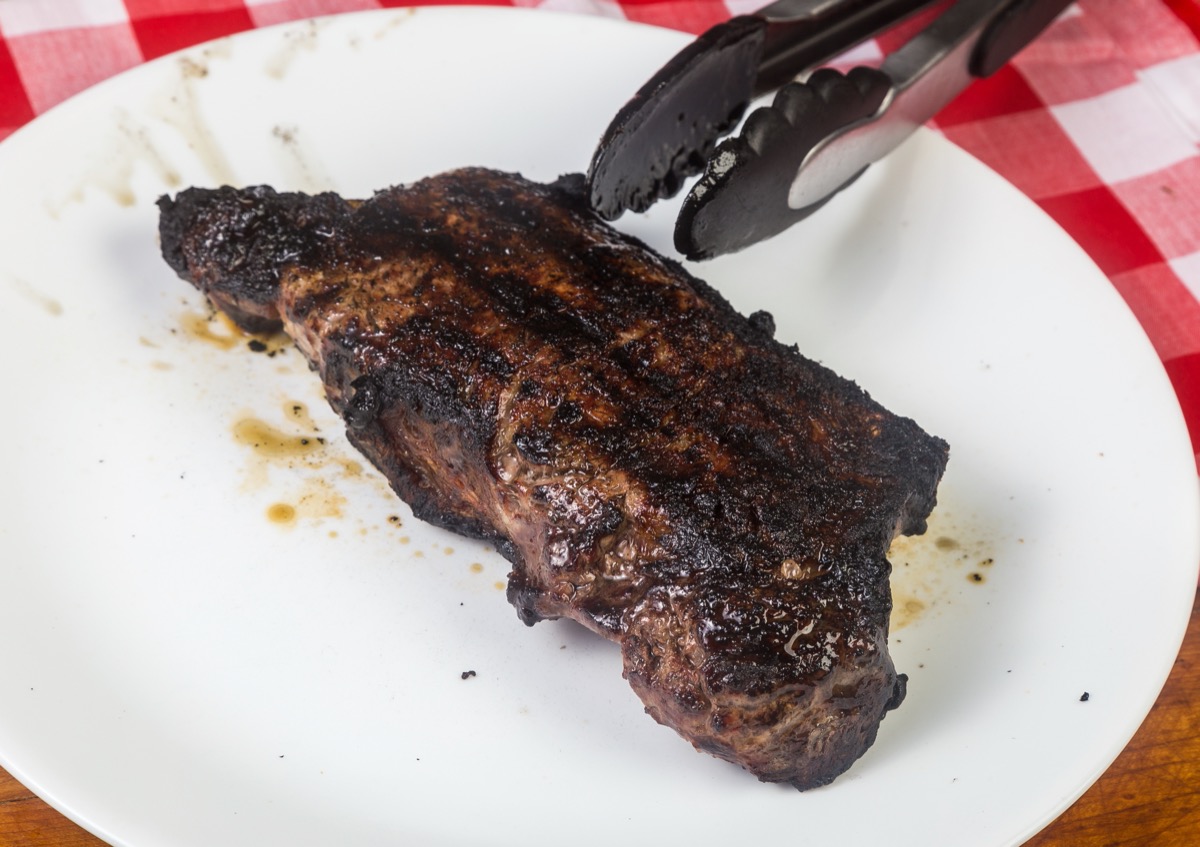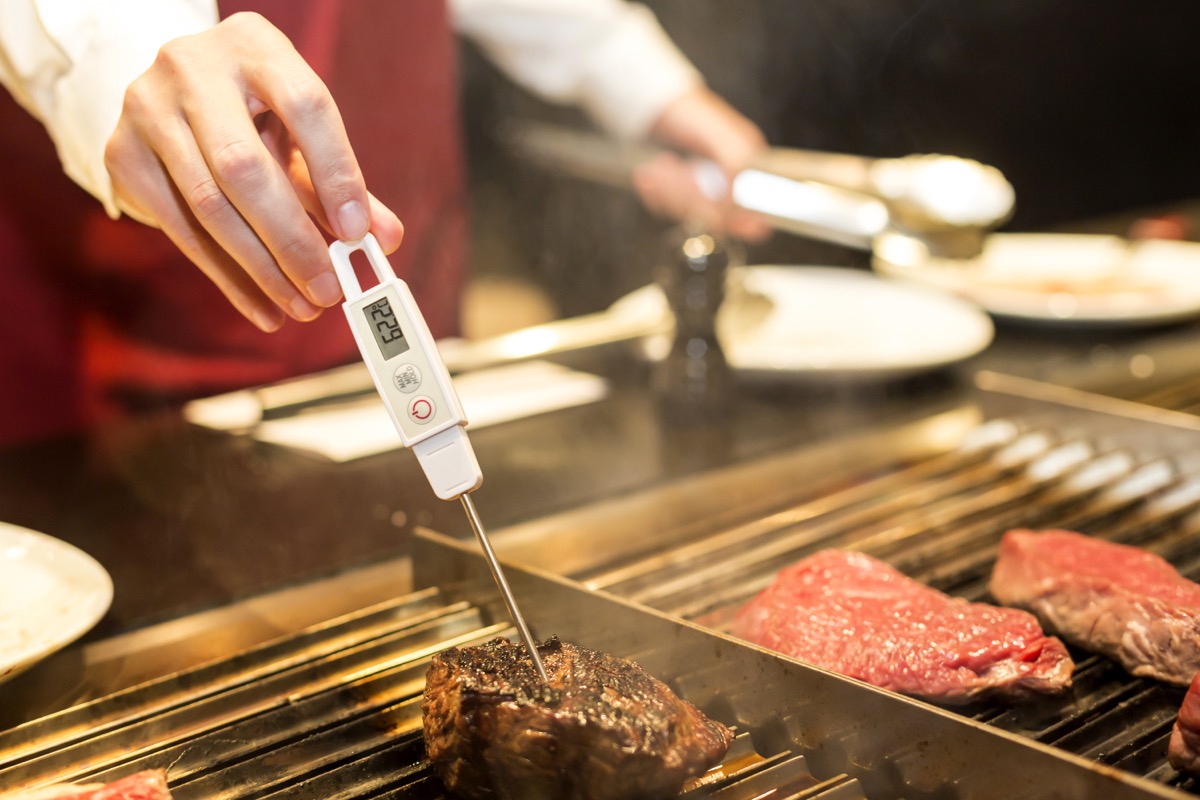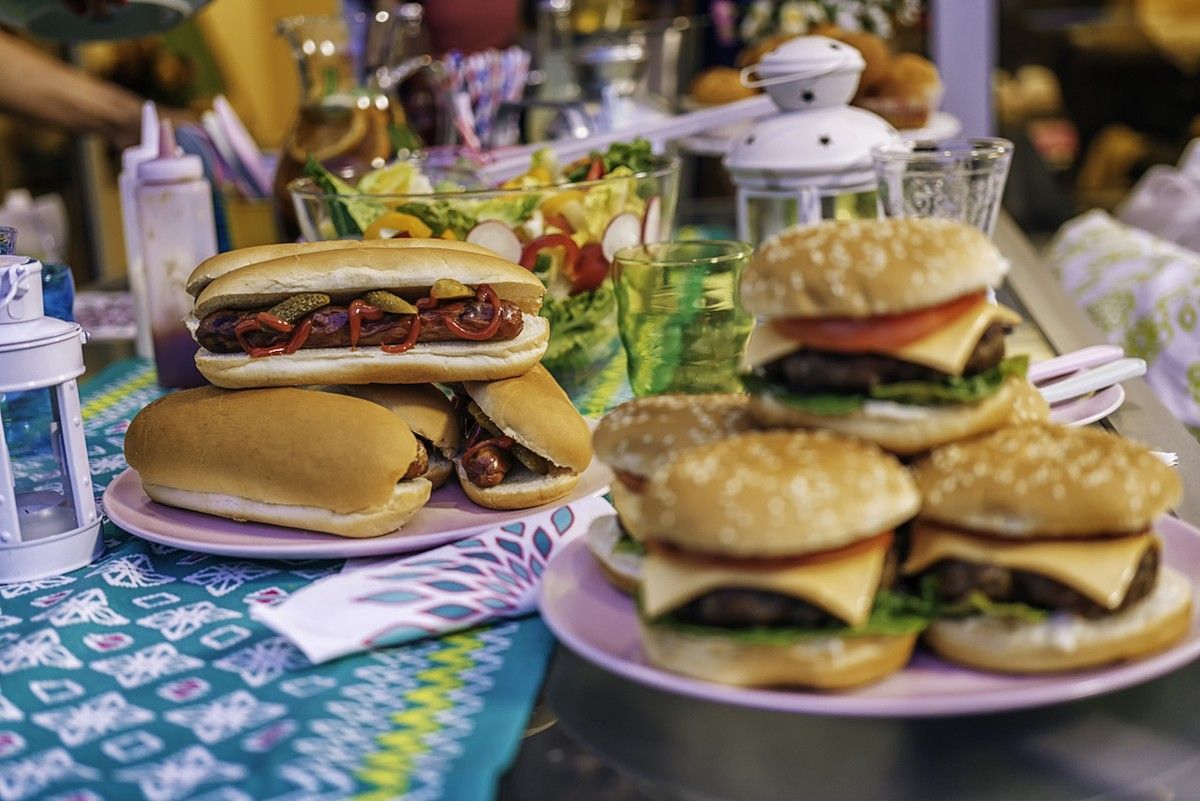RELATED: If You See This at a Barbecue, Don’t Eat It, USDA Says in New Warning. If you think cooking a steak until it’s nearly blackened is practically a crime, your aversion to well-done meat may actually be protecting your health. According to a 2009 review of research published in the journal Nutrition and Cancer, cooked meats contain heterocyclic amines (HCAs), compounds that have been linked to breast, colorectal, and prostate cancers.ae0fcc31ae342fd3a1346ebb1f342fcb High-heat cooking, like grilling, can increase the expression of HCAs in meat, as can cooking meat until it’s particularly well-done. According to the review’s authors, the research they examined confirmed that, “Exposure to HCAs through consumption of well-done meat may increase the risk of certain cancer in humans.” For the latest health and safety news delivered straight to your inbox, sign up for our daily newsletter. Unfortunately, eating your meat on the rare side may increase your risk of another serious health issue—and it’s not just food poisoning you have to worry about. According to a 2021 study published in the International Journal of Cancer, toxoplasma gondii, a bacterium that can be contracted through the consumption of undercooked meat, may have a link to a rare form of brain cancer. The study’s authors found that, among a group of adult study subjects, those who had glioma, a rare form of brain cancer, were also more likely to have toxoplasma gondii antibodies, indicating they’d been infected by the bacterium at some point. However, the study’s authors noted that this did not necessarily indicate a strict causality, and the relationship between the bacterium and the cancer should be studied further. If you want to ensure that the meat you’re eating is a suitable temperature for consumption, eyeballing your dish simply won’t cut it. The United States Department of Agriculture (USDA) recommends cooking poultry to 165 degrees Fahrenheit (F); cooking beef, lamb, pork, and veal chops, roasts, and steaks to 145 F; cooking ground beef, lamb, pork, and veal to 160 F; cooking fish to 145 F; and cooking eggs to 160 F. A reliable food thermometer is the best way to accurately gauge how hot your food is. While warm weather may feel pleasant, it can also encourage the rapid growth of dangerous bacteria in your food. If you’re out on a hot day, the USDA recommends keeping your hot food in containers that keep it hot and keep your cold food on ice, ensuring that you refrigerate it or dispose of it within two hours. If the day is 90 F or above, pathogenic bacteria can increase rapidly in a short period of time, so at these temperatures, your food is only safe to eat during a one hour window, the USDA warns. RELATED: Never Put This on Your Meat After Barbecuing, CDC Warns.



